Exhibition dates: 4th February – 29th May 2023
Projects: Ming Smith is organised by Thelma Golden, Director and Chief Curator, The Studio Museum in Harlem, and Oluremi C. Onabanjo, Associate Curator, Department of Photography, The Museum of Modern Art, with the assistance of Kaitlin Booher, Beaumont and Nancy Newhall Curatorial Fellow, Department of Photography, The Museum of Modern Art, and Habiba Hopson, Curatorial Assistant, The Studio Museum in Harlem.
Ming Smith (American, b. 1950)
Circular Breathing, Hart Leroy Bibbs, Paris
1980
Vinyl wallpaper
147 1/2 × 262″ (374.7 × 665.5cm)
Courtesy of the artist
© Ming Smith
Free spirit
Another fascinating, stimulating, challenging artist finally getting their due.
Music, spirit, transcendence, light, blur, dreams, improvisation, composition, jamming, joy, rhythm, respect, wonder, emotion, African American culture. Conjoined in a mysterious, reverent wistfulness…
“You don’t make art for money, especially as a Black artist. You do it because there is that need to create – and that has been part of my survival; that has helped me survive.”
I feel that too. Creativity has kept the black dog from the door, creativity has helped me survive. I’m sure it does for many artists.
Dr Marcus Bunyan
Many thankx to the Museum of Modern Art for allowing me to publish the photographs in the posting. Please click on the photographs for a larger version of the image.
The Museum of Modern Art announces Projects: Ming Smith, on view in the Museum’s street-level galleries from February 4 through May 29, 2023. A photographer who has lived and worked in New York since the 1970s, Ming Smith has served as a precedent for a generation of artists engaging the politics and poetics of the photographic image. Through a deep exploration of the artist’s archive, the exhibition will offer a critical reintroduction to Smith’s work through her distinctive approach to movement, light, rhythm, and shadow, highlighting how she transforms the image from a document of photographic capture into a space of emotive expression.
“You don’t make art for money, especially as a Black artist. You do it because there is that need to create – and that has been part of my survival; that has helped me survive.”
“My work as a photographer was to record, culturally, the period of time in which I lived – and I recorded it as an artist.”
“Oh no, it’s all discovery, it’s all improvisation. It’s like when jazz musicians solo. They improvise, and photography is definitely that, for me.”
“Whether I’m photographing a person on the street, someone I know, or on an assignment, I’m doing it because I admire them. I like the sense of exchange – they’re giving and I’m taking, but I’m also giving them something back. There were certain people who would understand what I was looking for and would try to give me a photograph by posing. Whatever I’m shooting, whether it’s a portrait or a place, my intention is to capture the feeling I have about that exchange and that energy.”
“I evolved as a photographer with the series Invisible Man [1990-1991], just like a jazz musician who plays the head [the known melody of a song] before they start improvising. Ralph Ellison’s book Invisible Man [1952] was an inspiration, especially the idea of what it means not to be seen, but I didn’t consciously set out to make work about it. I wanted to capture the feeling of painting and make photographs on an artistic scale. Living in a Black environment, the people I photographed didn’t have to put on any airs, they were just living their life. The series was about a feeling, an expression. Anyone could identify it. We were present but we weren’t there. We were visible but also invisible.”
“Living in Harlem was an authentic experience for me, and I was trying to capture that authenticity. I was living and my work came out of my life. I would go out with my camera to shoot events like the Million Youth March [1998] or meet musical figures like Dr. Edward Boatner or academics like Dr. John Henrik Clarke, and even watch Duke Ellington on TV – these people had so much history in them. Some people look at certain areas and only see the depravity and the struggle, but there’s so much love and genius there; there’s warmth. I think that was my motive in photographing Harlem, to communicate that warmth.”
Ming Smith
The moody magic of a long exposure photograph | Ming Smith | UNIQLO ArtSpeaks
Photography curator Oluremi Onabanjo examines Smith’s 1991 “Invisible Man, Somewhere, Everywhere,” a poignant image from this series inspired by Ralph Ellison’s 1952 novel “Invisible Man.”
Installation views of Projects: Ming Smith, on view at The Museum of Modern Art, New York from February 4, 2023 – May 29, 2023
Photos: Robert Gerhardt
The Museum of Modern Art announces Projects: Ming Smith, on view in the Museum’s street-level galleries from February 4 through May 29, 2023. A photographer who has lived and worked in New York since the 1970s, Ming Smith has served as a precedent for a generation of artists engaging the politics and poetics of the photographic image. Through a deep exploration of the artist’s archive, the exhibition will offer a critical reintroduction to Smith’s work through her distinctive approach to movement, light, rhythm, and shadow, highlighting how she transforms the image from a document of photographic capture into a space of emotive expression. Projects: Ming Smith is organised by Thelma Golden, Director and Chief Curator, The Studio Museum in Harlem, and Oluremi C. Onabanjo, Associate Curator, Department of Photography, The Museum of Modern Art, with the assistance of Kaitlin Booher, Beaumont and Nancy Newhall Curatorial Fellow, Department of Photography, The Museum of Modern Art, and Habiba Hopson, Curatorial Assistant, Permanent Collection, The Studio Museum in Harlem.
As Oluremi C. Onabanjo states, “For Ming Smith, the photographic medium is a site where the senses and the spirit collide. Calling attention to the synesthetic range of her photographic approach, this exhibition highlights how her images collapse the senses, encouraging us to attend to the hue of sound, the rhythm of form, and the texture of vision.” Works featured in the exhibition showcase a wide array of subjects, ranging from finely attuned studies of Black avant-garde musicians and dancers to depictions of everyday life in Harlem and Pittsburgh’s Hill District through photographic series made in response to Ralph Ellison’s novel Invisible Man and August Wilson’s Pittsburgh Cycle of plays.
Projects: Ming Smith is the fourth exhibition in MoMA’s ongoing Projects collaboration with The Studio Museum in Harlem. It takes up the work of a photographer who is important to the history of both museums. MoMA was the first institution to acquire Smith’s work (in 1979), and the Studio Museum has shown Smith’s work since the beginning of her career, when she was the first female member of the trailblazing Black photography collective the Kamoinge Workshop.
Thelma Golden says, “Almost from the day she arrived in New York City, Ming Smith was at the centre of an extraordinary cultural ferment, contributing to the Black Arts Movement while creating a space for herself within Harlem’s legendary Kamoinge Workshop. Working for over five decades, her contribution to modern photography is deeply significant – she continues to influence countless photographers through her singular documentation of, society’s humanity and pageantry. I’m thrilled that audiences who know her work will have the opportunity to revisit and reappraise her many achievements, and that new audiences will have the excitement of discovering her graceful, stunning images through Projects: Ming Smith.”
Projects: Ming Smith is accompanied by Ming Smith: Invisible Man, Somewhere, Everywhere, a new volume in MoMA’s One on One series, written by Oluremi C. Onabanjo. The book provides a sustained meditation on Smith’s photograph Invisible Man, Somewhere, Everywhere (1991) in MoMA’s collection.
Press release from the Museum of Modern Art
Introduction
For Ming Smith, photography is a site where the senses and the spirit collide through the prism of light. “I’m dealing with all these elements, getting that precise moment,” Smith has said. “Getting the feeling, the way the light hits the person – to put it simply, these pieces are like the blues.”
Projects: Ming Smith offers a critical reintroduction to a photographer who has lived in New York since the 1970s, and whose work has served as a precedent for generations of artists engaging the politics and the poetics of the photographic image in relation to experiences of Blackness. Through her skilful deployment of long exposures – which involves slowing the shutter speed of the camera lens to render movement as blur – Smith dissolves the boundaries between her subjects and their surroundings. Her dreamlike, abstract compositions are led by intuition and perfected through repetition.
The result of a deep dive into Smith’s archive, this exhibition reckons with the crucial position of this artist in the history of photography, and in the institutional memories of both The Museum of Modern Art and The Studio Museum in Harlem. MoMA was the first institution to acquire Smith’s work (in 1979), and the Studio Museum has shown Smith’s work since the beginning of her career, when she was the first female member of the trailblazing Black photography collective the Kamoinge Workshop. Bridging the distance between the present and the past, Projects: Ming Smith creates a photographic portal through which to encounter Smith’s images anew. It highlights how her pictures collapse the senses, encouraging us to attend to the hue of sound, the rhythm of form, and the texture of vision.
Text from the Museum of Modern Art
Installation view of Projects: Ming Smith, on view at The Museum of Modern Art, New York from February 4, 2023 – May 29, 2023
Photo: Robert Gerhardt
Page from Projects: Ming Smith extended labels (photographs below)
3. Ming Smith (American, b. 1950)
Sun Breeze After the Bluing, Hoboken, NJ
1972
UV print on dibond
Sheet: 72 × 47″ (182.9 × 119.4cm)
Courtesy of the artist
© Ming Smith
5. Ming Smith (American, b. 1950)
Black Dance
1981
UV print on dibond
Sheet: 40 × 60″ (101.6 × 152.4cm)
Courtesy of the artist
6. Ming Smith (American, b. 1950)
The Window Overlooking Wheatland Street Was My First Dreaming Place
1979
UV print on dibond
Sheet: 40 × 60″ (101.6 × 152.4cm)
Courtesy of the artist
© Ming Smith
9. Ming Smith (American, b. 1950)
Sun Ra Space II
1978
UV print on dibond
Sheet: 47 × 72″ (119.4 × 182.9cm)
Courtesy of the artist
© Ming Smith
11. Ming Smith (American, b. 1950)
Roxbury Interior, Boston, MA
1978
UV print on dibond
Sheet: 16 × 24″ (40.6 × 61cm)
Courtesy of the artist
© Ming Smith
14. Ming Smith (American, b. 1950)
Pharoah Sanders at the Bottom Line
1977
UV print on dibond
Sheet: 47 × 72″ (119.4 × 182.9cm)
Courtesy of the artist
© Ming Smith
16. Ming Smith (American, b. 1950)
Cascading Light
1981
UV print on dibond
Sheet: 16 × 24″ (40.6 × 61cm)
Courtesy of the artist
© Ming Smith
The stellar photographer Ming Smith remembers walking past the Museum of Modern Art when she was in her early 20s and telling herself, “I’m going to be in that museum one day.”
Anyone hearing her might have thought: Dream on. This was the 1970s. Smith was Black, female, new to New York City, with zero art credentials of the kind demanded by any museum of even the brashest up-and-comer, which Smith – a self-described low-key loner – was not.
But even then some changes were afoot – a few, isolated, sporadic – for artists and institutions alike. In 1979, in response to an open call by MoMA’s photography department for new work, Smith dropped off her portfolio. (The receptionist assumed she was a courier.) The museum bought two pictures, making her the first Black woman photographer to enter MoMA’s collection.
Forty years later came another landmark. In 2019, when MoMA opened its new Geffen Wing and the Studio Museum in Harlem, where Smith had shown over several decades, closed to build its new home, the two institutions began collaborating on exhibitions at MoMA’s Midtown and Long Island City locations.
The current show, called “Projects: Ming Smith,” installed on the ground floor at MoMA on 53rd Street (which has free public access), is the latest of these joint ventures, and it’s a beauty. With 52 pictures, mostly black and white, several being exhibited for the first time anywhere, it gives a good sense of Smith’s subject range and of her distinctive, self-invented style: improvisatory, multilayered, painterly, shadow-soaked, with images blurred as if shot at very high or low velocity, or viewed through retreating memory, or a volcanic rain.
Born in Detroit, raised in Columbus, Ohio, Smith started taking pictures when she was young – her pharmacist father was an amateur photographer – and learned the formal ropes as she went. While majoring in premed biology at Howard University she took a photography class and was told by the teacher that, given her race and gender, her prospects of a career in that field were next to nil. After graduating in 1971, she moved to New York City, where she supported herself as a fashion model, and kept taking pictures.
She soon plugged into a crucial support system. In 1972 she joined the Kamoinge Workshop, a Black photography collective based in Harlem. Kamoinge’s first female member, she participated in their notoriously hard-hitting group crits and for a while worked closely with one of the originating members, Anthony Barboza, accompanying him on a working trip to Senegal.
As was clear from a traveling survey of Kamoinge artists organised by the Virginia Museum of Fine Arts in 2020 – it later came to the Whitney Museum – the collective’s original members were eclectic in their styles and interests. But almost all their work adhered to the genre loosely known as “street photography,” grounded in a direct capturing of images, candid and unposed, of everyday life, with results that were documentary in effect and humanistic in intent. Smith’s work basically comes out of this aesthetic too, but also radically, romantically departs from it.
Many of her images, including the 1972 “Raise Your Window High,” the show’s earliest entry, are of city life, which became a long-term subject. A selection of Harlem-related pictures includes shots of the Apollo Theater marquee, a church service in progress, Alvin Ailey’s 1989 funeral, and a fist-pumping rally for the 1998 Million Youth March.
At the same time, much of her urban photography is not event-oriented, or even geographically specific. A series of photos taken in Pittsburgh in 1991, conceived as a visual response to a series of plays by August Wilson set there, could, by the look of them, have been shot in almost any city. A woman and child sit pensively on a Greyhound bus. A man in a pool hall practices cue moves. A dark silhouette of a figure trudges at night down a snow-covered street. Mood, not place or even people, is the real subject here. The title of the snowstorm picture, “Invisible Man, Somewhere, Everywhere,” says as much. So does the fact that the image once appeared in a MoMA show devoted to New York City.
Smith is a longtime jazz and blues devotee. She married a musician (saxophonist David Murray) and has photographed many. A visual equivalent of jazz performance has produced her most experimental work. Applied to street photography’s fairly set subject matter, her use of quick, reflexive shooting, manipulated shutter speeds, and multiple exposure printing opens the possibility for perceptual accident, and for improvisation, to be followed wherever it might lead, which is often in an abstracting direction. In addition, her penchant for framing small areas of light in fields of prevailing darkness gives a bluesy cast to all of this.
The show’s organisers — Thelma Golden, director of the Studio Museum in Harlem, and Oluremi C. Onabanjo, an associate curator of photography at MoMA, working with curatorial fellows Kaitlin Booher and Habiba Hopson – provide a chance to consider a wide and varied sampling of work at a glance in a group of 17 photographs from the 1970s and ’80s, printed large and small, and installed up and across a high gallery wall.
Many of Smith’s favoured subjects are here: city life, performance, travel. A white cloth whips in the wind on a tenement clothesline. The moon, a vortex of brightness, hangs tangled in trees in a Tokyo park. Alvin Ailey dancers flicker like vigil lights in a dark theater. Saxophonist Pharoah Sanders looks rock-solid onstage in New York while another musician, Sun Ra, is clearly an ET about to lift off, his sparkling gold scarf streaming like a comet tail behind him.
There’s a street-level mystic at work in Smith’s art. You sense it in her tremorous cityscapes, especially in her images of people – the primary subject, after all, of street photography. She shoots straightforward portraits, sometimes identifying the sitter by name (composer Edward Boatner; dancer Judith Jamison; writer Amiri Baraka), sometimes not. She makes self-portraits, though they’re hard to read. In one from 1992 called “Womb,” which Smith shot on a trip to Egypt, she appears to be emanating, barely materialised, from a pyramid behind her.
And then there are what I can only call holy pictures in which charismatic figures are transcendentally lifted up. In one, from 1979, titled “James Baldwin in Setting Sun Over Harlem,” Smith, using double exposure, overlays very faintly a photo she took of Baldwin onto a skyscape of light-shot dark clouds. In a second picture using the same technique, she floats above the city the visage of the immortal Harlem photographer James Van Der Zee. Sure, these images are just blatant hero worship. They’re also, like so much of Smith’s art, just wow.
Holland Cotter. “Ming Smith’s Poetic Blur,” on The New York Times website 16 February 2023 [Online] Cited 19/02/2023
1970s
Ming Smith (American, b. 1950)
West Indian Parade, Brooklyn
1972
Gelatin silver print
Frame: 21 1/4 × 27 1/4 × 1 1/2″ (54 × 69.2 × 3.8cm)
Sheet: 16 × 20″ (40.6 × 50.8cm)
Image: 12 × 18 1/2″ (30.5 × 47cm)
Courtesy of the artist
© Ming Smith
Ming Smith (American, b. 1950)
Luxembourg Gardens, Paris
1974
Pigment print
Frame: 21 1/4 × 27 1/4 × 1 1/2″ (54 × 69.2 × 3.8cm)
Sheet: 16 × 20″ (40.6 × 50.8cm)
Image: 13 × 18 1/2″ (33 × 47cm)
Courtesy of the artist
© Ming Smith
Ming Smith (American, b. 1950)
Oopdeedoo, Brooklyn
1976
from the series Coney Island
Pigment print
Frame: 27 1/4 × 21 1/4 × 1 1/2″ (69.2 × 54 × 3.8cm)
Sheet: 20 × 16″ (50.8 × 40.6cm)
Image: 17 3/4 × 13″ (45.1 × 33cm)
Courtesy of the artist
© Ming Smith
Ming Smith (American, b. 1950)
Jump, Harlem, New York
1976
Pigment print
Frame: 27 1/4 × 21 1/4 × 1 1/2″ (69.2 × 54 × 3.8cm)
Sheet: 20 × 16″ (50.8 × 40.6cm)
Image: 19 × 13 1/2″ (48.3 × 34.3cm)
Courtesy of the artist
© Ming Smith
Ming Smith (American, b. 1950)
Professor Edward Boatner, New York City, New York
1979
Gelatin silver print
Frame: 21 1/4 × 27 1/4 × 1 1/2″ (54 × 69.2 × 3.8cm)
Sheet: 16 × 20″ (40.6 × 50.8cm)
Image: 12 3/4 × 18 1/4″ (32.4 × 46.4cm)
Courtesy of the artist
© Ming Smith
Ming Smith (American, b. 1950)
James Baldwin in Setting Sun Over Harlem, New York
1979
Pigment print
Frame: 21 1/4 × 27 1/4 × 1 1/2″ (54 × 69.2 × 3.8cm)
Sheet: 16 × 20″ (40.6 × 50.8cm)
Image: 12 1/2 × 18 1/4″ (31.8 × 46.4cm)
Courtesy of the artist
© Ming Smith
Ming Smith (American, b. 1950)
Amina and Amiri Baraka “Lovers,” New York
1980
Pigment print
Frame: 21 1/4 × 27 1/4 × 1 1/2″ (54 × 69.2 × 3.8cm)
Sheet: 16 × 20″ (40.6 × 50.8cm)
Image: 13 × 18 1/2″ (33 × 47cm)
Courtesy of the artist
© Ming Smith
“The image is always moving, even if you’re standing still.”
Ming Smith
“I like catching the moment, catching the light, and the way it plays out,” the photographer Ming Smith has said. “I go with my intuition… it’s about always looking at lines and the quality of the movement. It’s about seeking energy, breath, and light. The image is always moving, even if you’re standing still.”1 For Smith, these are the central tenets of her approach to image-making: a practice attuned to bodily movement and spatial relations that maintains a commitment to the poetry of light and shadow.
In the early 1970s, Smith arrived in New York City after graduating from Howard University. She had studied microbiology and chemistry, but took the university’s only photography class to sustain a passion for the image inculcated in her by her father. Supporting herself as a model while shooting on the city streets, Smith spent time in Anthony Barboza’s studio and met photographers such as Louis Draper and Joe Crawford, swiftly becoming immersed in fiery debates about the stakes of photography as an art form.2 In 1972, Draper invited Smith to join The Kamoinge Workshop, a collective of African American photographers who gathered weekly to review and critique each other’s work. Its name derived from the Kikuyu word for “a group of people acting together,” Kamoinge was founded in 1963 and emerged as a shared political and artistic space for photographic improvement and, especially, self-determination. It was a powerful sentiment at a time of pivotal gains for the US Civil Rights Movement and decolonization across the African continent.
Joining Kamoinge was transformational for Smith’s photography and self-perception as an artist. She cut her teeth as a photographer and sharpened her conceptual focus, mining the structural and psychological tensions that animate experiences of Blackness. By turns dense and diaphanous, Smith’s pictures sustain hefty blacks alongside frothy swirls of gray and white. These mercurial, moody scenes resist spectacular clarity or straightforward interpretation. As historian and curator Maurice Berger has said, “Ms. Smith’s subjects are often suspended between visibility and invisibility: faces turned away, or are blurred or shrouded in shadow, mist or darkness, a potent metaphor of the struggle for African-American visibility in a culture in which black men and women were disparaged, erased or ignored.”3 In this way, Smith gives shape to the quotidian idiosyncrasies of Black life.
In an unending oscillation between light and darkness, Smith revels in the emotive elements of her subjects. Key to this is the photographer’s command of the blur, which critic Jessica Lynne succinctly defines as “the technique by which Smith collapses the boundaries between a photograph’s subject and its background.”4 Executed with rhythmic pacing and maintaining an acuity of vision, her engagement with sonic and lyrical forms is particularly notable. Subjects and captions refer to the plays of August Wilson, the words of Ralph Ellison’s Invisible Man (1952), and the music of Marvin Gaye and Billie Holiday, John Coltrane and David Murray. These intertextual references bring forward recognizable figures while affirming the function of these photographs as speculative compositions, shaped through intuition. “In the art of photography, I’m dealing with light, I’m dealing with all these elements, getting that precise moment,” Smith has said. “Getting the feeling, getting the way the light hits the person – to put it simply, these pieces are like the blues.”5
Oluremi C. Onabanjo, Associate Curator, The Robert B. Menschel Department of Photography, 2022
1/ Ming Smith quoted in “A Portrait of the Artist: Ming Smith in Conversation with Janet Hill Talbert,” in Ming Smith (New York & Dallas: Aperture & Documentary Arts, 2020). 15.
2/ Ibid., 12.
3/ Berger, Maurice. “A Photographer Who Made Ghosts Visible,” The New York Times, January 11, 2017. Accessed online. https://lens.blogs.nytimes.com/2017/01/11/a-photographer-who-made-ghosts-visible-ming-smith/
4/ Lynne, Jessica. “Jessica Lynne Revisits Ming Smith’s ‘Amina and Amiri Baraka (Lovers),'” Frieze, August 20, 2020. Accessed online. https://www.frieze.com/article/jessica-lynne-revisits-ming-smiths-amina-and-amiri-baraka-lovers
5/ Ming Smith quoted in “Photographer Ming Smith Shows Just How Much Black Life Matters,” by Siddhartha Mitter. The Village Voice, February 7, 2017. Accessed online. https://www.villagevoice.com/2017/02/07/photographer-ming-smith-shows-just-how-much-black-life-matters/
1990s
Ming Smith (American, b. 1950)
Invisible Man, Somewhere, Everywhere
1991
Oil paint on gelatin silver print
18 11/16 × 12 9/16″ (47.4 × 32cm)
Gift of Kathleen Lingo in memory of Linda McCartney
The Museum of Modern Art, New York
© Ming Smith
Ming Smith (American, b. 1950)
The Black Jewels of the U.S.A. II
c. 1991
Courtesy of the artist
© Ming Smith
Ming Smith (American, b. 1950)
Little Brown Baby Wif Spak’lin’ Eyes, For Paul Laurence Dunbar
1991
Pigment print
Frame: 21 1/4 × 27 1/4 × 1 1/2″ (54 × 69.2 × 3.8cm)
Sheet: 16 × 20″ (40.6 × 50.8cm)
Image: 12 × 18 1/4″ (30.5 × 46.4cm)
Courtesy of the artist
© Ming Smith
Ming Smith (American, b. 1950)
Greyhound Bus, Pittsburgh
1991
Pigment print
Frame: 27 1/4 × 21 1/4 × 1 1/2″ (69.2 × 54 × 3.8cm)
Sheet: 22 1/4 × 17″ (56.5 × 43.2cm)
Image: 18 × 12″ (45.7 × 30.5cm)
Courtesy of the artist
© Ming Smith
Ming Smith (American, b. 1950)
August Blues
1991
From Invisible Man
Pigment print
Frame: 27 1/4 × 21 1/4 × 1 1/2″ (69.2 × 54 × 3.8cm)
Sheet: 20 × 16″ (50.8 × 40.6cm)
Image: 19 × 13 1/2″ (48.3 × 34.3cm)
Courtesy of the artist
© Ming Smith
Ming Smith (American, b. 1950)
African Burial Ground, Sacred Space
1991
From Invisible Man
Pigment print
Frame: 21 1/4 × 27 1/4 × 1 1/2″ (54 × 69.2 × 3.8cm)
Sheet: 20 × 24″ (50.8 × 61cm)
Image: 12 1/2 × 18 1/4″ (31.8 × 46.4cm)
Courtesy of the artist
© Ming Smith
Ming Smith (American, b. 1950)
Mother and Child Deciding, Pittsburgh
1991
Gelatin silver print
Frame: 27 1/4 × 21 1/4 × 1 1/2″ (69.2 × 54 × 3.8cm)
Sheet: 20 × 16″ (50.8 × 40.6cm)
Image: 19 3/4 × 14″ (50.2 × 35.6cm)
Courtesy of the artist
© Ming Smith
In Mother and Child Deciding (1991), a young woman is seated at a diner booth with a child, both bundled in winter jackets. Her body is turned to the right, with her leg hoisted onto the booth’s seat, revealing a worn sneaker; her right elbow is placed on the booth’s table, and her little finger touches her lower lip. Her turned face and her outward gaze into the middle distance indicate that she is contemplating the menu posted on a board, or the photographs hung on the wall above the wood paneling. But her wistful face tells us that her thoughts are occupied by worries that have accompanied her here – worries that she cannot share with the child.
M. Neelika Jayawardane. “Ming Smith’s Photographic Tribute to August Wilson,” on the Aperture website February 4, 2021 [Online] Cited 07/05/2023
Ming Smith (American, b. 1950)
Yes, Immigrants
1991
Pigment print
Frame: 27 1/4 × 21 1/4 × 1 1/2″ (69.2 × 54 × 3.8cm)
Sheet: 20 × 16″ (50.8 × 40.6cm)
Image: 19 × 13 1/2″ (48.3 × 34.3cm)
Courtesy of the artist
© Ming Smith
Ming Smith (American, b. 1950)
Past Any Reason for Song
1991
Gelatin silver print
Frame: 21 1/4 × 27 1/4 × 1 1/2″ (54 × 69.2 × 3.8cm)
Sheet: 16 × 20″ (40.6 × 50.8cm)
Image: 12 1/2 × 18 1/4″ (31.8 × 46.4cm)
Courtesy of the artist
© Ming Smith
Ming Smith (American, b. 1950)
Womb
1992
Gelatin silver print
Frame: 21 1/4 × 27 1/4 × 1 1/2″ (54 × 69.2 × 3.8cm)
Sheet: 16 × 20″ (40.6 × 50.8cm)
Image: 12 × 18″ (30.5 × 45.7cm)
Courtesy of the artist
© Ming Smith
Ming Smith (American, b. 1950)
Khalid Muhammad, Million Youth March, Harlem, New York
1998
Gelatin silver print
Frame: 27 1/4 × 21 1/4 × 1 1/2″ (69.2 × 54 × 3.8cm)
Sheet: 20 × 16″ (50.8 × 40.6cm)
Image: 18 3/4 × 13 1/4″ (47.6 × 33.7cm)
Courtesy of the artist
© Ming Smith
Ming Smith (American, b. 1950)
Million Youth March, Raised Fists, Harlem, New York
1998
Gelatin silver print
Frame: 27 1/4 × 21 1/4 × 1 1/2″ (69.2 × 54 × 3.8cm)
Sheet: 20 × 16″ (50.8 × 40.6cm)
Image: 19 × 13 1/2″ (48.3 × 34.3cm)
Courtesy of the artist
© Ming Smith
The Museum of Modern Art
11 West 53 Street
New York, NY 10019
Phone: (212) 708-9400
Opening hours:
10.30am – 5.30pm
Open seven days a week

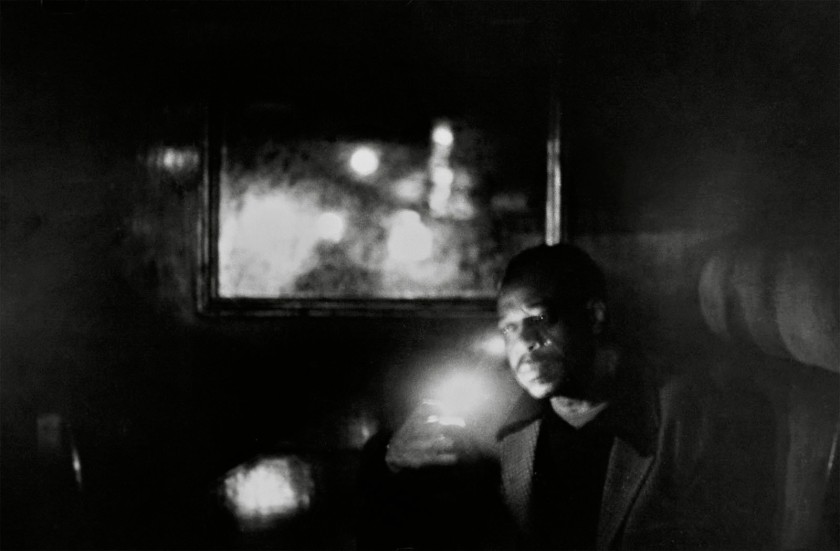

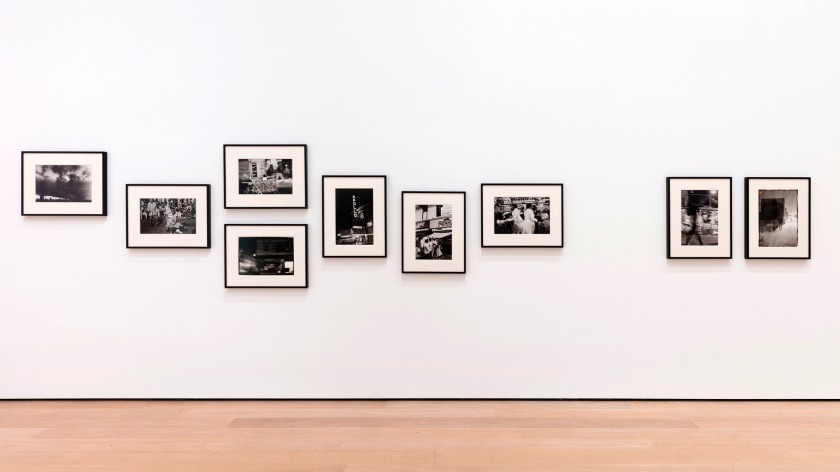







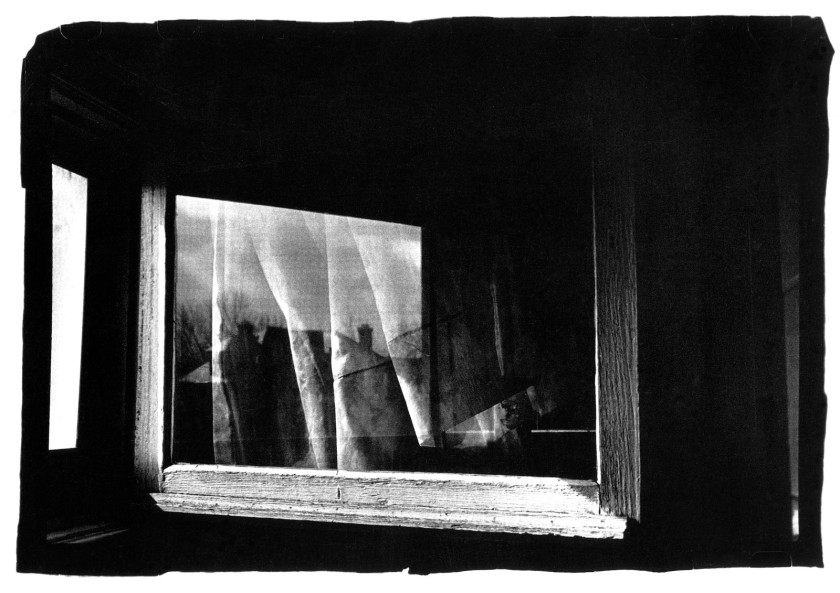



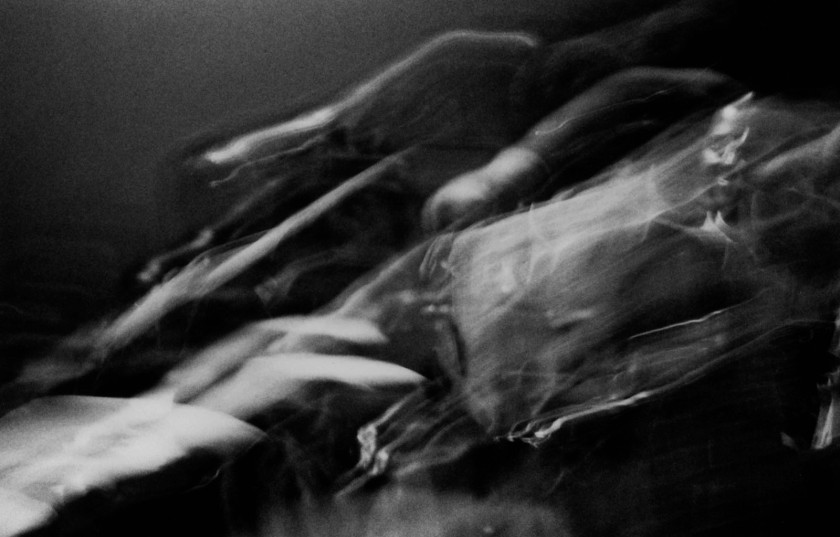















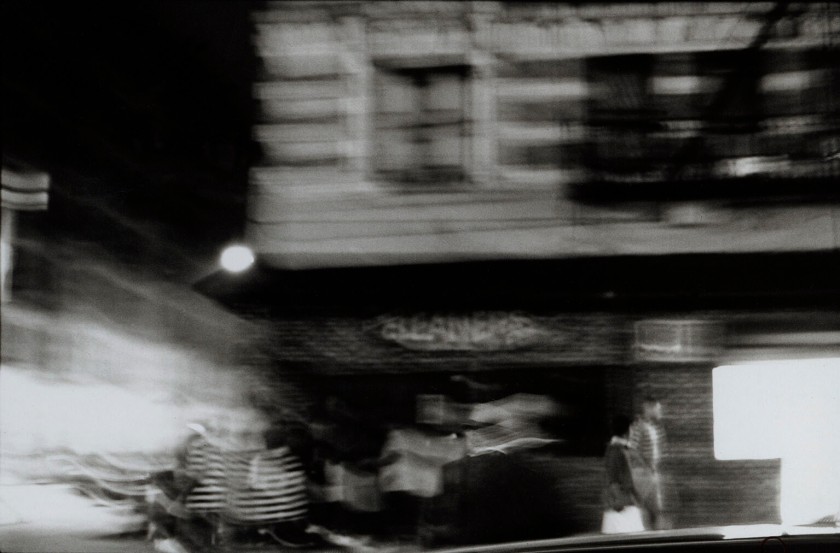











You must be logged in to post a comment.